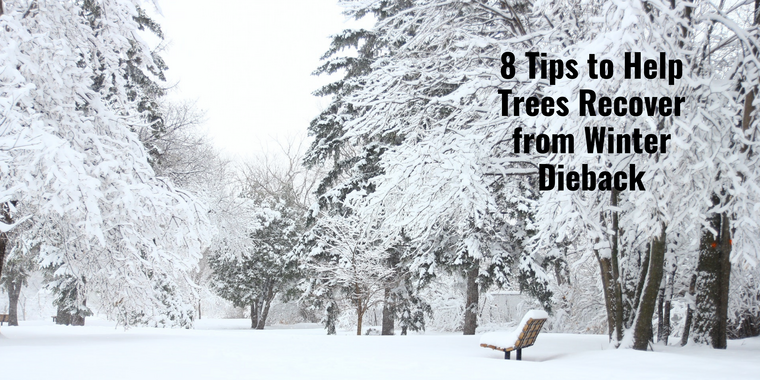
When trees are killed off by Winter Dieback, it can seem like there’s no way to bring them back to life again. However, with the right combination of pruning and tilling, you can help them recover quickly, ensuring your tree will be healthy and strong by next year’s growing season.
To learn more about this process, check out these eight tips on how to help trees recover from Winter Dieback.
Get Quotes from Tree and Plant Care Experts Today
1) Remove Debris
If trees were particularly hard to hit, limbs and twigs that broke off during high winds should be trimmed away as soon as possible. This will help prevent disease or mold growth.
If there are broken limbs hanging over your house or on a power line, make sure they’re cleared by a professional arborist or utility crew. Also, remove any leaves or needles that might have blown onto your lawn so they don’t create an unsightly mess during spring cleanup.
2) Provide Watered Soil
In order for trees to recover, they must first have access to proper soil. According to Environmental Canada, an average of two centimeters of snow cover is needed before tree roots can absorb groundwater. When levels drop in winter, watering is necessary.
Some municipalities help water parks and public areas (check your local bylaws), but it's a good idea for homeowners to check on their trees themselves.
or larger trees that require more water than smaller ones, consider investing in a soaker hose or sprinkler system; these keep moisture at the root level and prevent damage from freezing ground conditions.
3) Treat Infected Branches
In most cases, winter dieback is caused by a fungus in tree branches. The disease doesn’t spread to healthy trees and can often be treated by disinfecting affected areas and cutting out infected branches.
In extreme cases, fungicides may be needed.
4) Try Compost Tea
Compost tea is often used to introduce new bacteria into plants and give them a good, healthy kick-start in their growing season. Compost tea also helps trees recover from winter dieback and maintain a balance of healthy microorganisms that ward off harmful pathogens.
There are many ways to brew compost tea, but there’s only one right way—and it may take some experimentation on your part before you get it right. In any case, doing it wrong shouldn’t hurt your plants or make things worse; so, don’t worry if you want to try brewing compost tea on your own.
A lot of people recommend adding blood meal or fish emulsion into compost when making compost tea.
5) Give the Tree a Rest Period
Most trees benefit from a rest period each year during which they aren’t fertilized. Winter is a perfect time for such a break, and while it is normal for trees to lose some leaves during winter, if you notice your tree starting to look like it's losing more than just dead leaves, then it could be in trouble.
If you see dieback around your tree's branches or along its trunk all year long, then there is an issue with either watering or sunlight (or both). Don't worry, there are things you can do!
6) Spray with Plant B-1 or Glyphosate
If your plant shows signs of die-off, spray it with Plant B-1 or Glyphosate. B-1 is a fast-acting mix of sugars and amino acids that help to promote growth in damaged plants.
Glyphosate stimulates root growth when sprayed on dying trees. Both products can be found online and are non-toxic for humans, animals, birds, and fish. Be sure to follow label instructions for proper use when spraying any chemical on your plants.
7) Prune in Spring
Pruning in early spring is key since that’s when tree activity and sap flow start to pick up. If you prune too late, your trees may not have sufficient time to recover before winter hits again.
Pruning while there are leaves on your trees means they’ll be able to grow more efficiently in spring and summer; it also means you can more easily spot dead or diseased limbs so you can remove them before they spread their damage.
Dead branches can often be spotted by cracking: if a branch snaps when bent instead of flexing or bending like a twig, chances are good it's deadwood.
8) Keep the Roots Warm in Winter
During winter, evergreen trees can be affected by a condition called winter dieback. This occurs when their roots are exposed and die, which prevents them from absorbing nutrients and water and making food in springtime.
To prevent winter dieback and help your trees recover, here are some tips:
1. Protect trees with root barriers: If you live in an area with large numbers of cold winters or heavy snowfall, it’s best to protect your vulnerable trees with root barriers (plastic tubes that wrap around tree trunks). You can purchase these at most garden centers or online.
2. Keep mulch away: Never place mulch directly against a tree trunk—it will block airflow and keep roots too warm, which leads to winter dieback.
1. Register your company
2. Create a searchable listing
3. Connect with more clients
